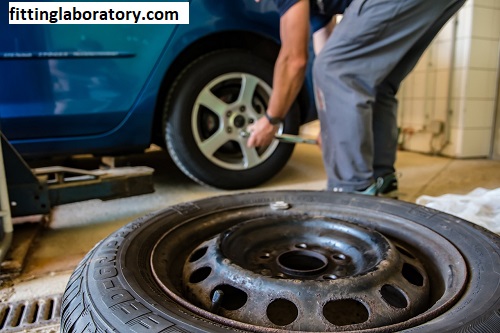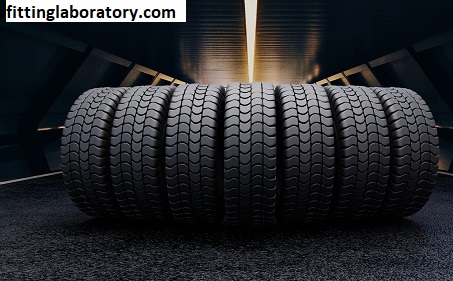The Largest Tires That Can Fit: A Complete Guide
Largest Tires:
Largest Tires Changing your vehicle’s tires is the most important change you might make. And the choice happens to be choosing the largest tires to fit in a car based on its specifications. Even though oversized tires might provide performance, nice aesthetics, and off-road capabilities improvements, the fit of such oversized tires requires a constant balancing of factors such as wheel wells, suspension, gearing, and clearance.

This in-depth article is going to walk you through everything you need to know about the largest tires that can fit your vehicle. We will dive into what to look out for in terms of the advantages and challenges you may face, and how to figure out which ones will work best on your car or truck, SUV, and such, and provide answers to some of the more popular FAQs.
Why Consider Larger Tires?
Largest Tires:
But before dwelling deep into the nitty-gritty of tire size, a point should be made to understand why anyone would even want to fit big tires in the first place. Several motivations may drive someone to upgrade to bigger tires:
- More Ground Clearance: Big tires lift the vehicle higher off the ground and increase clearance between the bottom of the vehicle and the undercarriage. This mainly relates to off-road vehicles or trucks that must clear most obstacles, such as rocks, logs, and deep mud.
- Improved Traction: Larger tires have a larger contact patch with the ground, hence better grip, especially in hard driving conditions. This is very important for off-road enthusiasts or those who drive through inclement weather such as snow or rain.
- Better Aesthetics enthusiasts: the exterior aspect of a car mustn’t be a secondary consideration to its general performance as well. An oversized tire contributes to an aggressive, bold stance and usually makes a vehicle look rougher and more muscular.
- Towing and hauling: Truck and SUV owners use their vehicles for towing heavy loads often. More coverage through bigger tires enhances the capability of the vehicle to absorb added stress owing to the load because they create more area in the tires’ surface for weight distribution with their wider profiles besides making it more stable.
- Improved handling: The larger the tires, the more contact area, and thus better handling can be achieved, but increased size can have a penalty in terms of fuel economy, acceleration, and agility.
How to Determine the Largest Tires That Will Fit:
Largest Tires:
Fit the largest tires on your vehicle. This requires a comprehensive understanding of the current specifications and limitations of your vehicle. Here is what you need to consider in the effort:
1. Wheel Well Clearance
The wheel well is that cavity in the vehicle body in which the tires reside. The biggest thing, then, when upgrading to bigger tires, is determining whether the tire will clear the wheel well when the suspension compresses. When either the tire rubs against the wheel well and/or against the suspension components, it will damage both the tire and the vehicle.
- Measure the height: width, and backspacing of the wheel well. This will tell you the largest tire possible. Remember to include considerations like:
- Height: Clearance through the fender when you compress your suspension.
- Width: You’ll have bigger tires potentially rubbing against your fender flares or parts of your suspension when the car turns.
- Backspacing and Offsets: Backspacing is a factor that measures the distance of how far inward or outward the tire is mounted toward the mounting surface of the vehicle. It can also define the clearance at which the tire makes contact with suspension parts.
2. Suspension Modifications
Stock suspension is mainly suited for smaller, lighter tires. On the other hand, bigger and heavier tires demand suspension modifications:
- Lift Kits: This is the type of kit that raises the body or frame of your vehicle to have space in the wheel well for
- Larger-sized tires: Lift kits raise your ground clearance, and you can fit much bigger tires compared to your stock tire size.
- Leveling Kits: If your car is front-end lower than the rear, then a leveling kit will help adjust and balance the ride heights to ensure enough clearance for larger tires.
- Shocks and Struts: With increased weight and size, larger tires may require upgrading shocks and struts if your vehicle is to be used for much driving.
3. Wheel Size and Offset
Largest Tires:
The size of the rims or the wheels is also a factor that would determine what would fit. Quite obviously, one’s tire size is crucial but the diameter and width of the wheel must be compatible with that tire. A larger tire requires mounting on a bigger wheel to fit properly.
- Diameter: The diameter of the tire must be equal to that of the diameter in inches. A 35-inch tire, for example, needs a diameter of 17 to 20 inches, depending on the size of the tire.
- Width: Larger tires are sometimes wider. You must check the width of the wheel to ensure that the tire will fit and not rub up against it.
- Offset: This is the distance of the wheel’s mounting surface from its centerline. Improperly installed or incorrect offset would also cause ripping on suspension, fenders, or wheel wells.

4. Gearing and Speedometer Calibration
In addition to that, the effective gear ratio of the vehicle is changed through the use of larger tires. That means that for every rotation of the tires, the vehicle travels a further distance. In addition to that, the reading on the speedometer becomes inaccurate because of the larger tires, and it will be very necessary to adjust the speedometer before the use of larger tires.
Gear Ratios: As you install large-sized tires, your vehicle will have to exert much more force to move them, which is going to hurt the acceleration and also on fuel efficiency. Re-gearing your vehicle (axle ratios) will be able to recover this loss too, bringing back the balance between power and performance.
5. Weight of the Tires
Largest Tires:
Larger tires tend to be heavier than OEM tires, and increased stress is placed on the car’s suspension system, brakes, and drivetrain. First and foremost, the vehicle’s components must be able to support the added weight attributed to the oversized tires. Heavy tires will also result in a decrease in fuel efficiency due to an increase in rotational mass.
6. Legal and Regulatory Restrictions
It also enables you to take into consideration what the law says about the tire’s size in your locality. The different regions have relatively strict rules over how much you are allowed to change around a vehicle, especially when it comes to tire sizes. Sometimes, fitting tires that are too large may earn you fines or even extra inspections.
Largest Tires for Various Types of Vehicles:
Largest Tires:
1. Passenger Cars
Passenger cars like sedans and hatchbacks offer minimal space in the wheel wells and smaller set-ups in suspension; hence, they are constructed to not accommodate large tires. Most standard passenger vehicles should fit tires between 17-20 inches in diameter with a width of 7 to 9 inches.
Major overhauls of the largest possible tire probably require wheel well modifications and often suspension lifts. Usually, tire sizes for automobiles are 225/45R17 or 235/50R18. Performance cars or some customized cars tend to use tires of size 245/40R19 or 255/35R20.
2. Trucks
Pickup trucks off-road models-for instance, the Ford F-150, Chevy Silverado, RAM 1500, etc-are designed to fit larger tires. Generally speaking, stock trucks can accommodate the largest of the stock tire sizes ranging from 33 to 35 inches in diameter. With lift kits, you may be able to fit tires as large as 37, or even 40 inches.
- Ford F-150: Stock, the largest tire you can put on is usually around 33 inches. With a 6-inch lift, you can fit 35-37-inch tires.
- Chevrolet Silverado 1500: Stock, you can fit up to 33-inch tires and with a lift 37-inch tires are popular
- Ram 1500: Depending on the model, 33 to 35-inch tires are standard, but with a lift, you can go up to 37 inches
3. SUV’s:
Largest Tires:
Of course, SUVs, as in the Toyota Land Cruiser or Jeep Wrangler and Nissan Patrol, are typically designed for off-road use, so it is much less of an ordeal to fit bigger tires on these than on regular cars. Stock tire sizes of SUVs range from 31 to 33 inches, but by using a lift kit, or even a suspension mod, you can cram 35-inchers onto your wheels and even bigger 37-inchers.
- Jeep Wrangler: Stock, you can fit up to 33-inch tires. With a 2.5-inch lift, you can fit 35-inch tires.
- Toyota Land Cruiser: Stock, you can fit 31-inch tires but with a lift, the car can quite easily accommodate 35-inch tires.
- Nissan Patrol: Depending on the model and year, 33 to 35-inch tires can fit, and modifications can take up to 37 inches.
FAQs:
Largest Tires:
1. How do I know if my car can fit larger tires?
Determine whether larger tires can be accommodated by taking measurements of wheel wells or checking if suspension clearances are feasible or get in touch with your vehicle’s manual or a professional. Generally, a lift kit or leveling kit is essential to gain space for more substantial tires.
2. Do I need to upgrade my suspension to install a bigger tire on my vehicle?
Yes, for the most part. And oversized tires will usually require a suspension lift or leveling kit to provide enough clearance. You can pretty much forget rubbing and damage otherwise.
3. What is the biggest tire that can be fitted without a lift kit?
You generally should be able to accommodate tires one to two inches larger in diameter than stock size without a lift kit. For example, if you have a 30-inch tire stock size, you might fit 31 or 32-inch tires without a lift.
4. Will bigger tires hurt my fuel economy?
Yes, larger tires will increase the resistance that tires create when rolling, which impacts the fuel efficiency of the vehicle. More massive tires also cause an engine to work harder and lower its MPG.
5. How do I reset my speedometer once I put on bigger tires?
You can do it in a dealership or you can buy an after-market speedometer correction device to equalize the difference created by the larger tires.

Conclusion:
Largest Tires:
Fitting the largest tires that your vehicle can accommodate is a sound understanding of the specification of your vehicle and selection of appropriate size and the requirement to upgrade or supplement that. Whether you are seeking a more rugged off-road vehicle, enhancing the aesthetic appeal, or improved towing capacity, larger tires often bring with them wonderful gains. However, fitting should be done carefully so as not to damage the vehicle and ensure safe optimal operation. By consulting a professional and accounting for all the factors involved, you can make the most of your tire upgrade.